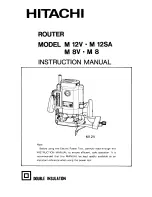
Chapter 8 Basic Setting
XS1930 Series User’s Guide
90
8.8 PoE Setup
Note: The following screens are available for the PoE model(s) only.
A powered device (PD) is a device such as an access point or a switch, that supports PoE (Power over
Ethernet) so that it can receive power from another device through an Ethernet port.
Name
Enter a descriptive name that identifies this port. You can enter up to 64 alpha-numerical
characters.
Note: Due to space limitation, the port name may be truncated in some web
configurator screens.
Speed/Duplex
Select the speed and the duplex mode of the Ethernet connection on this port. The choices are
Auto
,
Auto-1G
,
2.5G / Full Duplex
,
5G / Full Duplex
, and
100M / Full Duplex
for a 100Base-T
connection.
1G / Full Duplex
is supported by both 1000Base-T and 1000Base-X connections.
10G /
Full Duplex
is supported by the 10 Gigabit Ethernet connections on the Switch that has a 10
Gigabit interface.
Selecting
Auto-1G
or
Auto
(auto-negotiation) allows one port to negotiate with a peer port
automatically to obtain the connection speed and duplex mode that both ends support. When
auto-negotiation is turned on, a port on the Switch negotiates with the peer automatically to
determine the connection speed and duplex mode. If the peer port does not support
autonegotiation or turns off this feature, the Switch determines the connection speed by
detecting the signal on the cable and using half duplex mode. When the Switch’s auto-
negotiation is turned off, a port uses the pre-configured speed and duplex mode when making a
connection, thus requiring you to make sure that the settings of the peer port are the same in
order to connect.
Flow Control
A concentration of traffic on a port decreases port bandwidth and overflows buffer memory
causing packet discards and frame losses.
Flow Control
is used to regulate transmission of signals
to match the bandwidth of the receiving port.
The Switch uses IEEE802.3x flow control in full duplex mode and backpressure flow control in half
duplex mode.
IEEE802.3x flow control is used in full duplex mode to send a pause signal to the sending port,
causing it to temporarily stop sending signals when the receiving port memory buffers fill.
Back Pressure flow control is typically used in half duplex mode to send a "collision" signal to the
sending port (mimicking a state of packet collision) causing the sending port to temporarily stop
sending signals and resend later. Select
Flow Control
to enable it.
802.1p Priority
This priority value is added to incoming frames without a (802.1p) priority queue tag. See
Priority
Queue Assignment
in
for more information.
Media Type
On the Switch that has a 10 Gigabit interface, such as the SFP+ slot, you can insert either an SFP+
transceiver or an SFP+ Direct Attach Copper (DAC). An SFP+ Direct Attach Copper (DAC) is an
SFP+ housing that has no optical module but uses a fixed-length passive copper cable assembly,
which reduces cost and power significantly.
Select the media type (
sfp_plus
or
dac10g
) of the SFP+ module that is attached to the 10 Gigabit
interface.
Apply
Click
Apply
to save your changes to the Switch’s run-time memory. The Switch loses these
changes if it is turned off or loses power, so use the
Save
link on the top navigation panel to save
your changes to the non-volatile memory when you are done configuring.
Cancel
Click
Cancel
to begin configuring this screen afresh.
Table 30 Basic Setting > Port Setup (continued)
LABEL
DESCRIPTION
















































